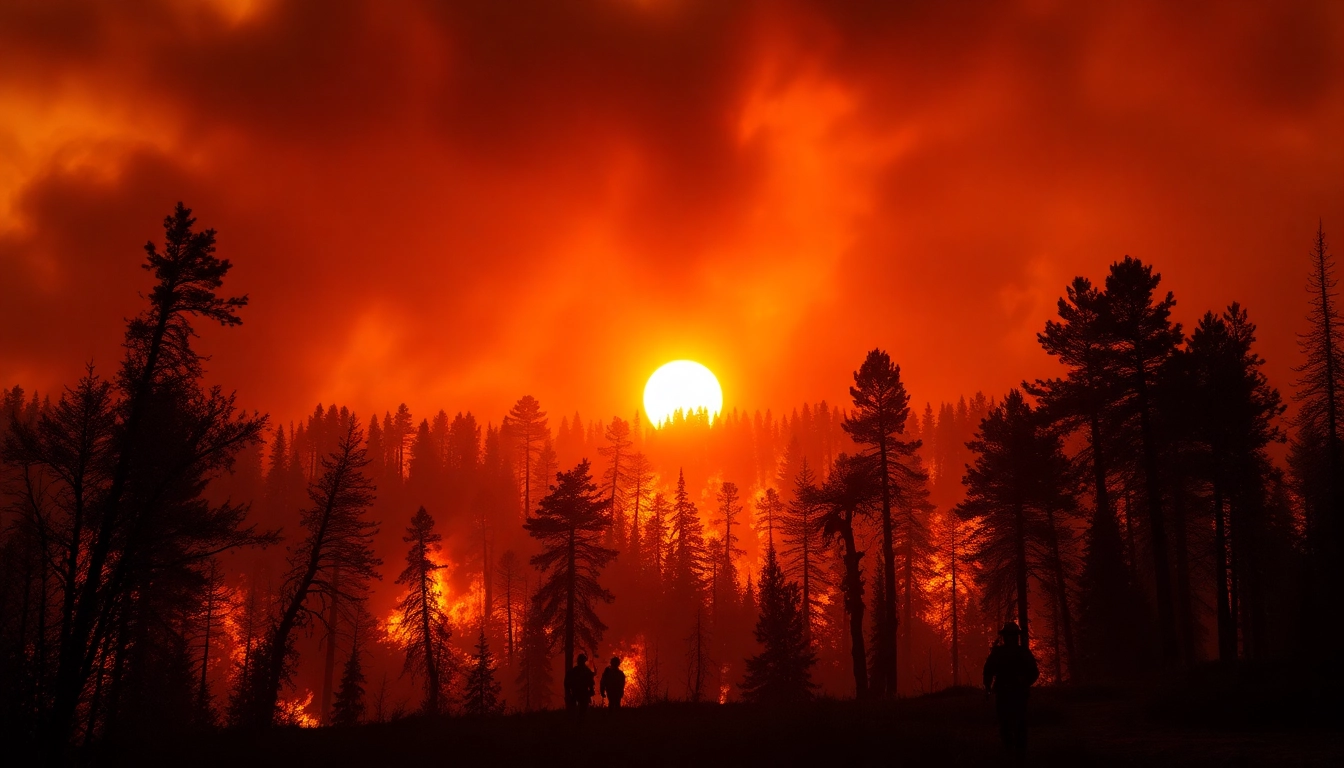Overview of Wildfire Events
Wildfire events have become a significant concern worldwide, driven by a combination of natural factors and human activities. These events not only devastate landscapes but also impact ecosystems, air quality, and human health. Understanding these occurrences, their causes, and effects is vital for devising efficient management strategies. For more insights into wildfire events, we need to delve into their historical context, current statistics, and underlying causes.
What are Wildfire Events?
Wildfire events, commonly known as wildfires, are uncontrolled fires that spread rapidly through vegetation in wilderness areas. These fires can occur in forested regions, grasslands, or brushland and can be ignited by natural sources, such as lightning, or human activities, such as campfires left unattended or arson. The characteristics of wildfires can differ significantly based on factors such as the fuel (the type of vegetation), weather conditions (like wind and humidity), and the topography (the physical features of the land).
Historical Context and Impact
Historically, wildfires have played a natural role in many ecosystems, aiding in processes such as nutrient cycling and the regeneration of certain plant species. However, the scale and intensity of wildfires have changed dramatically in recent decades, particularly due to human influences. Significant wildfires, such as the Great Fire of 1910 in the United States, have shaped forest management policies and fostered advances in firefighting technologies and strategies. The consequences of these fires often extend beyond immediate destruction; they can alter entire landscapes, influence biodiversity, and contribute to climate change.
Current Wildfire Statistics
Current statistics about wildfire events indicate a trend toward increased frequency and intensity. According to the National Interagency Fire Center, over 70,000 wildfires are reported annually in the United States alone, burning millions of acres of land. The impact of ongoing climate change, including rising temperatures and prolonged droughts, has intensified these wildfire outbreaks. Policies regarding land management, fire prevention, and emergency preparedness continue to evolve in response to these worrying trends.
Causes of Wildfire Events
Naturally Occurring Triggers
Natural triggers for wildfire events primarily include lightning strikes and volcanic activities. Lightning is responsible for a significant percentage of wildfires, especially in forested and remote areas where human activity is limited. These fires can be beneficial in some contexts, helping to clear dead vegetation and promote new growth. However, they can also escalate due to dry conditions and strong winds, leading to widespread destruction.
Human-Induced Factors
Human activities are a major driver of wildfire occurrences. Common causes include:
- Campfires left unattended
- Discarding cigarettes in dry areas
- Burning debris without adequate precautions
- Arson
Moreover, land-use changes, such as agriculture and urban development in fire-prone areas, exacerbate the risk of wildfires. Increased human encroachment into natural landscapes often leads to higher risks of ignition and makes firefighting efforts more complex.
Climate Change and Wildfire Frequency
Climate change significantly influences wildfire frequency and severity, creating conditions that are conducive to larger and more intense fires. Rising temperatures lead to longer dry seasons, lower humidity, and increased drought conditions, which collectively elevate the risk of wildfires. Moreover, climate change can alter vegetation patterns and types, creating new fuel sources that further increase wildfire hazards. As such, ongoing research aims to better understand and mitigate the impacts of climate change on wildfire dynamics.
Impact of Wildfire Events
Environmental Consequences
The environmental consequences of wildfires are profound and multifaceted. Wildfires can devastate habitats, cause soil erosion, adversely affect air and water quality, and contribute to the loss of biodiversity. The regeneration process can take years or decades, and some ecosystems may never fully recover. For instance, certain plant species thrive in fire-prone areas; however, extreme fires can lead to the extinction of species not adapted to such environments.
Effects on Human Health
Beyond environmental effects, wildfires pose significant health risks to nearby populations. Smoke from wildfires can lead to respiratory problems and exacerbate pre-existing health conditions. Fine particulate matter released into the air can travel long distances, affecting air quality in areas far removed from the fire itself. Vulnerable populations, including children, the elderly, and those with existing health conditions, are particularly at risk.
Economic Implications
The economic implications of wildfires are substantial, costing billions in damage each year. The immediate costs include firefighting efforts, property damage, and evacuation expenses, while long-term impacts may involve loss of productivity and diminished property values in affected areas. Additionally, the tourism industry can suffer as popular natural attractions become damaged. On the broader scale, wildfires can strain public resources and insurance systems, necessitating comprehensive policy shifts to address losses.
Preparedness for Wildfire Events
Community Preparedness and Awareness
Effective preparedness for wildfire events relies on strong community awareness and action. Educational initiatives focusing on fire safety, evacuation procedures, and preparing properties can greatly enhance community resilience. Simple practices, such as creating defensible space around homes (removing flammable vegetation) and establishing emergency plans, can save lives and property. Regularly updating these plans and conducting community drills can further reinforce readiness.
Safety Equipment and Resources
Proper safety equipment can significantly reduce risks during wildfire events. Communities should invest in firefighting resources, including water tanks, firebreaks, and communication systems. Homeowners in fire-prone areas should consider installing fire-retardant materials, maintaining clear escape routes, and having emergency kits prepared. Moreover, access to up-to-date information during an active fire can guide effective responses and resource allocation.
Emergency Evacuation Procedures
Emergency evacuation procedures must be well-defined and communicated to all community members. This includes identifying primary and secondary routes for evacuation, establishing designated shelters, and ensuring that all residents are aware of these plans. Regular community meetings and drills can facilitate familiarization with evacuation processes, making them more effective when real emergencies arise.
Future of Wildfire Events
Monitoring and Technology in Wildfire Management
The future of wildfire events will increasingly depend on innovative technologies and improved monitoring systems. Remote sensing, satellite imagery, and drone surveillance can offer real-time data about fire behavior and spread. Predictive modeling, utilizing machine learning algorithms, can enhance firefighting strategies by forecasting potential wildfire scenarios. Collaboration between government agencies and tech companies will be essential in harnessing these tools to mitigate wildfire risks.
Policy Developments and Resources
Ongoing policy developments dictate how effectively communities can respond to wildfire threats. Legislation focused on land use, fire management, and environmental protection will play critical roles in mitigating wildfires. The establishment of funding for preventive measures, such as controlled burns and community education programs, along with the integration of fire risk assessments into urban planning, will shape future wildfire management strategies.
Educational Initiatives and Community Involvement
As we look forward, educational initiatives will be paramount in enhancing community involvement and preparedness for wildfire events. Programs aimed at teaching fire ecology principles and sustainable land management practices can foster greater understanding of wildfire dynamics. Local governments, schools, and organizations can collaborate to create inclusive community dialogues that prioritize resilience, safety, and environmental stewardship.



